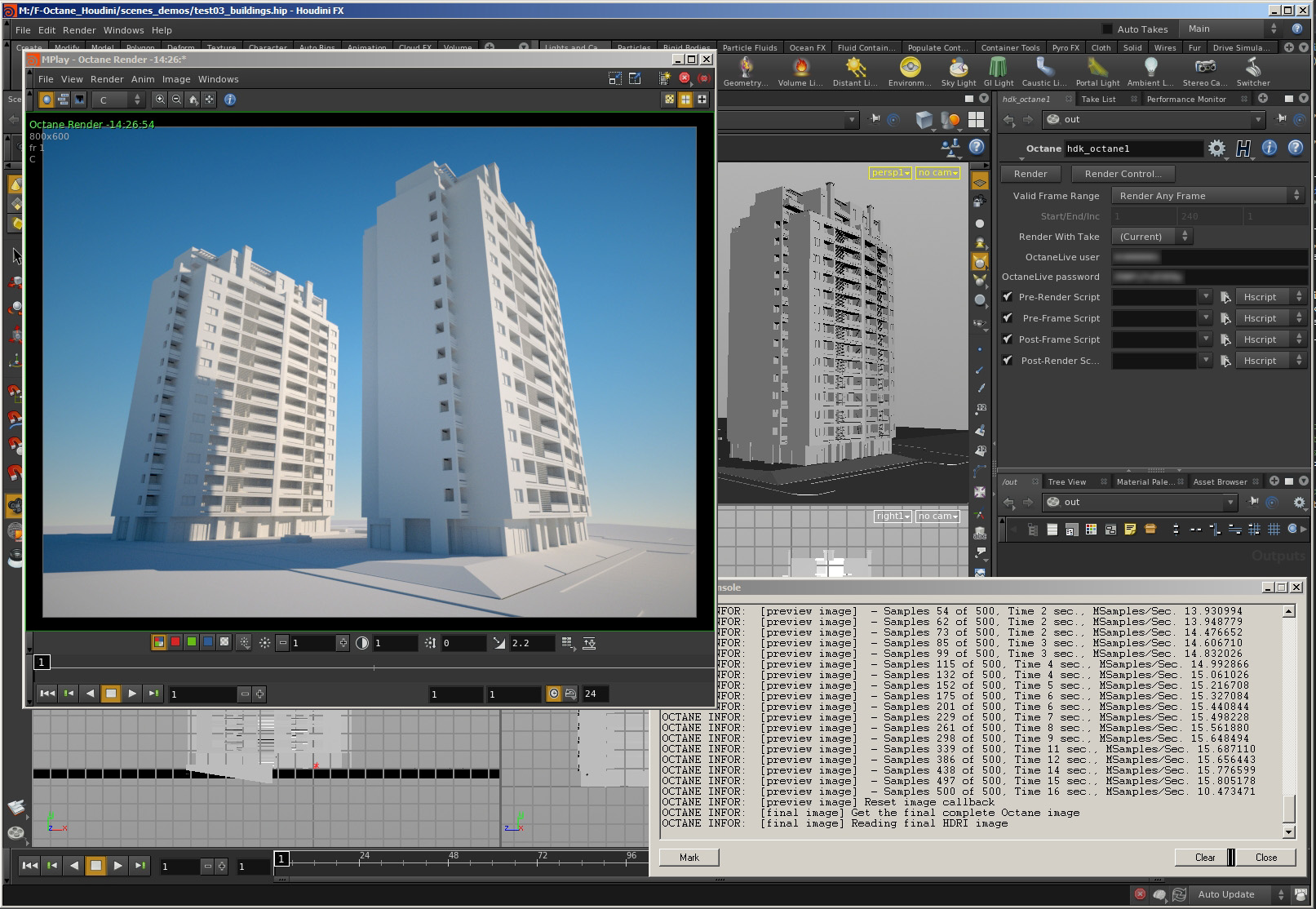
In this test, we are mostly focused on the out-of-the-box capabilities. This is not an in-depth review but rather a quick glance at the available options. In this post, we test most of the major Revit rendering tools. Comparing 6 Revit Rendering Plugins.
I'm currently about to go into my 3rd year of architecture at university. I am able to create scenes efficiently and to a relatively high standard even before photoshop. I have a basic knowledge of 3ds max (I would be using vray), however recently I started to learn blender and I have picked the program up so much faster than 3ds max. So my current situation is that I use revit to model my architectural projects.
In the Rendering The OctaneRender for Revit plug-in allows real-time interaction with the scene, while at the same time rendering at final quality: you can change the camera, lights, materials, textures and the position of objects in your scene and see the final quality result in near real-time. Display the building model in the drawing area. Export the rendered image to a file. Save the rendered image as a project view. Adjust exposure settings, and render the image again. Change render settings, and render the image again.
Octane Render Crack is the world’s first and fastest GPU-accelerated, unbiased, physically correct renderer. Then using the plans and sections make a fast model on blender.Octane Render 4 Crack + Direct Torrent (Latest) Free Download. Or the other option would be to model in revit and use it for drawings and sections which can be taken into photoshop to give them some life. It plugs directly into your modeling.Since revit and max have a great connection with each other in terms of importing and exporting I think this would be a highly beneficial feature since max can understand the layers of revit and you can select multiple objects under the same category. Enscape is a real-time rendering and virtual reality plugin for Revit, SketchUp, Rhino, Archicad, and Vectorworks.
Octane Render 4 Revit Software For Architects
Get out, see the world, travel, relax, commune, dine, eat, sleep.Beyond that, honestly, you touch on so many points we need to break down a few things - which can be readily posed with two questions :Q1. Lumion is the worlds fastest 3D rendering software for architects.I'd start by first suggesting (seriously) that you step away from your desk and use your free time (less) wisely. Or stick with blender for the efficiency of texturing.Illustrating that Enscape content resides as families in Revit while Lumion content.
Octane Render 4 Revit How To Work With
Come the working day, you will discover very quickly fidelity and accuracy in drawings wins over "pretty stuff" (fluff) no end.Don't get so caught up on the "tools". "Life" in architectural drawings is a concept (mostly) fostered by school. Don't over-estimate Revit-Max interoperability - you will still have to learn how to work with translating formats, segmented-part-model exports, etc.3. Houses might employ it - but again, I believe it too largely remain a Max world - even Maya.2. Blender hasn't a large presence in commercial (architectural*) practices - 3DS remains king there, if that's where you want to remain strong, don't let that slip.*viz. Do you see yourself practicing architecture after architectural school, or architectural visualisation?To pre-empt your answers to those questions, some answers/observations to your own.1.

If that won't give us what we need, then we use MAX, but we use MAX with the same 3rd party rendering engine we're using in Revit. Again, not leaving Revit, which keeps us more productive, but we do have to do extra work to define better materials / lighting.- If we need to do a real lighting analysis or many renderings (so we need to batch render them or render farm them in-house) we'll use the Cloud Rendering if possible. We're using Octane Render's beta plug-in and are pretty happy with it, but there are others here. This way we're not leaving Revit, and staying more productive.- If we do need to do a small number of renderings for marketing images that help 'sell' the project, we use a decent rendering plug-in for Revit that gives better results than the built-in Mental Ray. Combined with good custom-made materials, this works surprisingly well for standard design views and design communication that we might have rendered in the past.
Many would use Rhino here instead. So as long as the connections are identical between the two, we're good.- That said, we are exploring using Fusion 360 for some more organic modeling, for you can get real solids out of it which work better in Revit. Sometimes we'll have a 'placeholder' in the Revit model for the Blender model, and just export the joints where the more organic Blender model meets the Revit model for when we fab we'll fab directly from the Revit model or the Blender model. We're just using it as a glorified rendering engine, and the DAY that the Octane Render Plugin for Revit gets batch rendering we'll (hopefully) stop using MAX altogether except for very specific lighting analysis.- If we need to do design work that isn't in Revit at all, and is better suited to Sub-D style modeling, we use Blender 100%. We don't model in MAX, because it sucks.
Picking the 'wrong' tool to learn isn't really a danger, and spending more time on a design with an 'inferior' tool you know how to use really well will give better results than lackluster work in a theoretically 'better' tool. But as others here have said, think more about the process and the overall picture. Whatever tools you use, get really good at them.


 0 kommentar(er)
0 kommentar(er)
